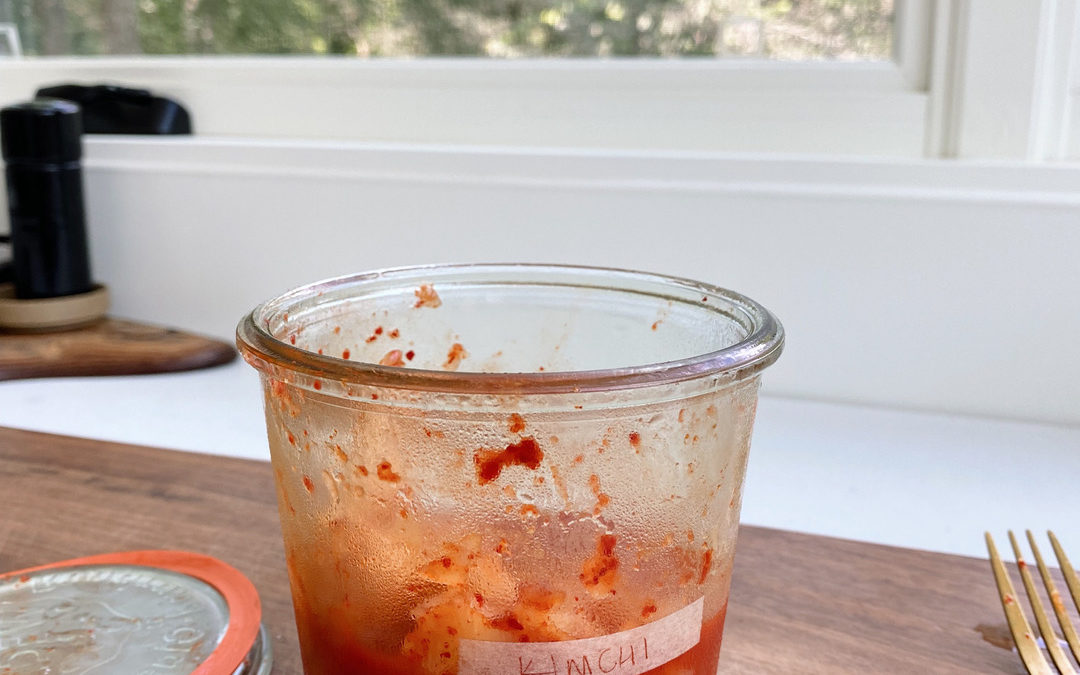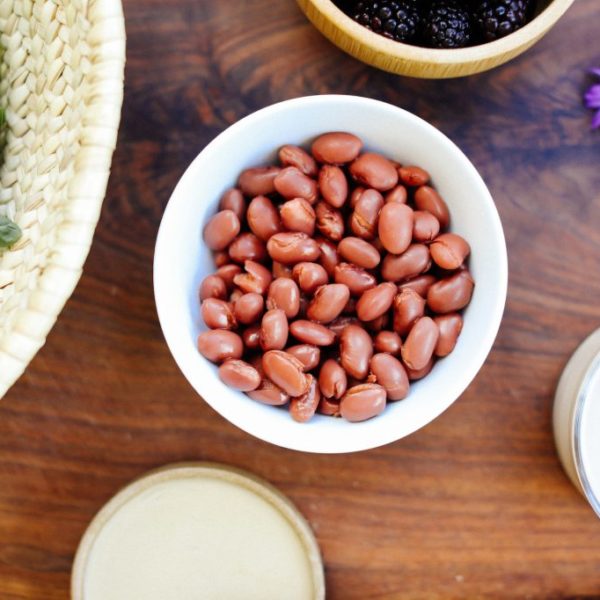8 Factors That Can Alter Your Food Portions
Your food portions will change from meal to meal, and day to day.
As they do, it’s important for you to develop an understanding of what that is so you can use those little insights about yourself feel more confident in how to best nourish your unique body.
Learning to listen to your body’s hunger and fullness signals to guide your food choices is one of the most important skills for nourishing yourself well. Being in tune with your hunger guides you to know what to eat, when to eat, and how big or small of food portions to eat to best support your body.
As you begin using your hunger and fullness signals to eat, you may start noticing different yourself feeling:
- hungry again shortly after eating
- starving by the time you eat dinner
- too full after a meal
- feeling more hungry, even when you’re eating the same way you typically do
That’s because there are so many different factors that can influence how much you eat, and sometimes those things can cause you to overeat or under-eat.
Keep reading to see what to be mindful of as you’re choosing your food portion sizes so you can strengthen your ability to use your hunger and fullness as a guide.
Why Your Food Portions Can Change
Keep these in mind when you check in with your hunger and determine what your food portions should be.
1. What You’ve Already Eaten (or Not Eaten)
One common factor that’s likely to influence your food portions is what you’ve already eaten, or not eaten.
For example, if you’ve intentionally or unintentionally undereaten throughout the day, this can cause your body to feel intense hunger that may lead to larger portions. These larger portions can often cause overeating because you’re just so ravenous.
Additionally, when we undereat for an extended period of time, then consume a really large amount of food due to exceptional hunger, this can result in blood sugar spikes. These can lead us to feel less satisfied and satiated overall, perpetuating the cycle.
On the other hand, let’s say you’ve eaten a substantial dinner and would now like to enjoy a dessert. That portion of dessert often times will naturally be on the smaller side because of your adequate intake at dinner.
Lastly, think about the exact opposite situation. Say we have a very small dinner then follow up with the dessert. Chances are the portion sizes of that dessert are going to larger because our hunger cues were never quite satisfied.
2. Activity Levels
Our activity levels can also impact our food portions.
On days when you’re more active, you’ll likely notice yourself needing a larger portion of food to support the level of activity you’re participating in. To accommodate this, aim for carbohydrates and healthy fats that will provide your body with the sustained energy it needs, alongside some protein that will help rebuild your muscle tissue.
When you notice yourself being more active than usual, be mindful of that so you can ensure you’re adjusting your portions to meet your needs.
On the other hand, if you’re normally very active and you’re resting or taking a break, your body won’t need as much nourishment, so you’ll want to pay attention to how your hunger changes on your less active days.
3. Environmental Triggers
One common factor that can influence your portion size inadvertently is environmental triggers. These are anything in your environment that is triggering you to eat something or eat a certain amount.
Some environmental triggers may be very supportive, such as having more nourishing food options at eye level in the fridge, rather than tucked into the produce drawers below. This can remind you to choose larger portions of vegetables and greens because they’re top of mind.
However, some environmental triggers may not be supporting the type of eating habits you’re wanting to experience for yourself. For example, one of the members in our Mindful Nutrition Method™ program noticed that she was often snacking on chips or cookies in the afternoon. After some exploration, she realized this was because she was always walking by the office kitchen to go to meetings or refill on her tea, and she was simply grabbing a snack because it was out and available.
Noticing your eating patterns to see when you may be influenced by your environment can help you identify if and when it’s impacting your portion sizes.
4. Stress Levels
Stress can impact your food portions in two different ways.
- Smaller portions
When stress initially comes on, your appetite is likely to go down because your sympathetic nervous system (SNS) puts your body is in “fight or flight” mode to respond to the stressful situation. Your brain tells your adrenal glands to release adrenaline which increases your heart rate, sending blood to muscles and your heart so you can take action, temporarily putting your hunger on hold (1). When the stressful situation passes, your SNS returns to its baseline.
If you’re unaware that your hunger is suppressed due to stress, you may notice you’re undereating. While we use our hunger signals to guide our food choices, it’s important to recognize when those signals may not be working (i.e. due to stress) and nourish yourself well anyway.
- Larger portions
The second way stress can influence your portions is when you’re experiencing chronic stress. If stress isn’t managed or alleviated, the SNS will remain triggered and responding to that stress.
When this happens, your body releases cortisol, which is why it’s often referred to as the stress hormone. Unlike adrenaline which can put a pause on your hunger, cortisol can increase your appetite (2). If your stress response continues to remain “on,” your cortisol levels may remain elevated.
If you’re experiencing this chronic stress, you’re not only more likely to experience physical hunger, but you’re also more likely to experience more comfort or cravings for carbohydrates or sugary foods.
Sugar can release dopamine — the feel-good chemical, activating the pleasure centers of the brain (3).
This stress eating can lead you to reach for larger servings of those foods.
5. Distracted or Rushed Eating
Distracted or rushed eating is exactly that — eating while you’re distracted or rushing through a meal. This commonly looks like eating in front of the TV, at your desk, while scrolling social media, or anything else that takes your focus away from sitting and enjoying your food.
When you’re distracted or rushed, it’s much more challenging to use your hunger and fullness signals as a guide for how much to eat. This may lead you to either eat more or less than your body needs because you’re not mindful of and in tune with your body’s signals.
6. Lack of Sleep Can Influence Your Food Portions
Research has shown that poor sleep quality leads to increased cravings for processed or sugary foods, overeating throughout the day, and not eating as many fruits and veggies.
Try eating meals that are packed with protein and fat when you’re tired, so you have more sustained energy throughout the day!
7. Your Cycle
Nearly 30 percent of premenopausal women are iron deficient (4), and if you’re vegetarian or vegan or have a heavy menstrual flow, you’re at a greater risk for iron deficiency. In addition, menstruation alone lowers the amount of iron in your body (5).
Because of this, you may feel more tired during menstruation, which signals to your body that it needs energy. Carbohydrates are the body’s fast-acting form of energy, so you may notice yourself craving carbohydrate-rich foods or feeling like you need a larger portion to get that energy source.
Be sure to eat plenty of iron-rich foods, especially during your menstrual cycle to support your body’s needs and energy levels.
8. How Hydrated You Are
Water is responsible for every process in the body, including your metabolism. By drinking enough water every day, you’re helping your digestion keep moving, while supporting an efficient metabolism, and so much more (1)(2).
If you’re dehydrated, you may feel hungry when you’re truly thirsty. Staying hydrated will help keep your hunger cues more accurate.
When you feel hungry, drink 1 glass of water, wait 10-15 minutes and reassess your hunger cues. If you’re still hungry you may be experiencing true hunger, and if your hunger subsides you may try drinking a bit more water to see if you’re just thirsty.
How You Can Strengthen Your Ability to Find the Right Portions
Finding the right portions take patience and practice. It requires the ability for you to tune into your body and discover what physical hunger and fullness feels like for you and then also have the proper knowledge to know how to use that information in a supportive way. This is what we support our members with inside of the Mindful Nutrition Method™ program.
You can sign up here for our free workshop where we share an exercise to help you better tune into your unique hunger and fullness cues and guide you through our Mindful Nutrition Method™.
Sources
- Pharmacology of appetite suppression: implication for the treatment of obesity. Halford JC. Curr Drug Targets. 2001;2:353–370.
- Stress, cortisol, and other appetite-related hormones: Prospective prediction of 6-month changes in food cravings and weight. Obesity (Silver Spring). 2017;25(4):713-720. doi:10.1002/oby.21790
- Rada P, Avena NM, Hoebel BG. Daily bingeing on sugar repeatedly releases dopamine in the accumbens shell. Neuroscience. 2005;134(3):737-744. doi:10.1016/j.neuroscience.2005.04.043
- Camaschella, C. (2015). Iron-deficiency anemia. N Engl J Med, 2015(372), 1832–1843.
- Blanco-Rojo, R., Toxqui, L., López-Parra, A. M., Baeza-Richer, C., Pérez-Granados, A. M., Arroyo-Pardo, E., & Vaquero, M. P. (2014). Influence of diet, menstruation and genetic factors on iron status: A cross-sectional study in Spanish women of childbearing age. International Journal of Molecular Sciences, 15(3), 4077–4087.








